14 Excellent Tips for River Piking
By Chris Millar The Highlander-Future Image Dublin Member
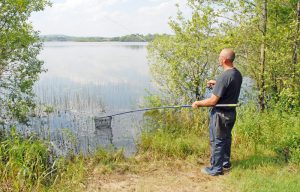 Its holiday time back home in Europe and many of my friends will be looking forward to their breaks, fishing on the lakes, canals and rivers of Ireland. They will meticulously be fixing their tackle boxes and oiling their reels and deciding what will be their main quarry. I know after spending the year fishing for Bream, Hybrids, Perch, Roach and Tench, I always made it my aim to break the Irish record. Came close once but close ain’t the record. For all the guys who are leaving the SE Asian shores to go “Home” I thought I would give you a few tips that one of the best Pike anglers in Ireland (Nathan Edgell) told me that will help you immensely. I’ve been pike fishing for just over 5 decades (Oh I feel old) now and I absolutely love it.
Its holiday time back home in Europe and many of my friends will be looking forward to their breaks, fishing on the lakes, canals and rivers of Ireland. They will meticulously be fixing their tackle boxes and oiling their reels and deciding what will be their main quarry. I know after spending the year fishing for Bream, Hybrids, Perch, Roach and Tench, I always made it my aim to break the Irish record. Came close once but close ain’t the record. For all the guys who are leaving the SE Asian shores to go “Home” I thought I would give you a few tips that one of the best Pike anglers in Ireland (Nathan Edgell) told me that will help you immensely. I’ve been pike fishing for just over 5 decades (Oh I feel old) now and I absolutely love it.
1. Equipment.
When fishing rivers have good strong gear, rods are very competitively priced these days go for a rod with at least 2.5lb Test Curve. A minimum of 15lb mono or 30lb braid is a must and always use a wire trace. Long nosed pliers/forceps are needed and side cutters to deal with difficult hook holds, hooks are easy to replace, pike aren’t. Use a landing mat where needed, fish responsibly and always care for your catch.
2. Clothing.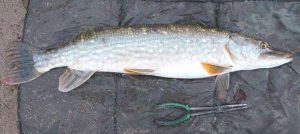
The traditional weather back home ain’t the same as Thailand so wrap up warm. Wear suitable clothing that you don’t mind getting dirty but that is comfortable and stay safe and always have a change of clothes in the car.
3. Mobility.
The key to pike fishing rivers is mobility. Being constrained by time as most of us are due to other commitments and the shorter daylight hours during the traditional season don’t wait for them to come to you. River pike are more opportunistic than still water fish so stay mobile and search the river until you find a taking fish.
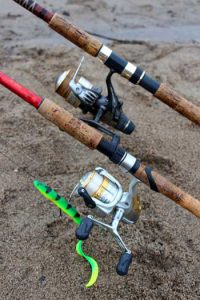 4. Lure Fishing.
4. Lure Fishing.
Lure fishing allows you to cover the water and to search it methodically and quickly. Use this method to locate pike which will follow or that you miss and then go back as soon as you can with baits. You will also discover areas that look like good pike holding spots and again you can then concentrate on these areas with baits.
5. Features.
Target features, predators and prey use features for different reasons as a general rule pike being an ambush predator will lie up in certain places, find these places and find the pike. These places are notably weirs, side channels, tributary streams, bridges, cover, islands, areas of slack water, natural obstructions; drop offs bends and creases. Learn and target the features on your local rivers.
6. Margins.
Ignore margins at your peril. I’ve caught more river pike from margins than anywhere else. Approach swims quietly and with caution, stay a rod length back and start by fishing the water immediately in front of you. Keep your silhouette off the water and never walk up the bank side but rather zigzag away from the river and then back on to it. One of my pet hates is observing anglers who walk right up to the edge of the river in the swim and immediately cast to the other side of the river, if you were on the other side of the river where would you cast to? Exactly where you are standing is the answer.
7. One may lead to more.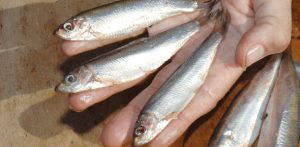
More often than not when you find one pike there will always be more. There is a reason why that pike is situated in that specific location and usually it won’t be alone. It always amazes me even after catching one or even a few pike and the disturbance this causes that you can still catch another one only a minute later. Don’t write off a swim that you’ve just caught in.
8. Dead baits.
All dead baits work on rivers. My personal favourite are sprats which are often overlooked and roach as coarse bait. My experience of river pike is that they are extremely opportunistic and as I get to watch the majority of takes I witness that most of the time they don’t have time to study the bait they just take it. A simple roving float rig and trotting down the marginal line has caught me lots of fish. Mobility is key; the only time I switch to bigger baits is when I’m statically fishing a weir or a deep bend or a slack area of water and the deeper areas. Then float ledger or paternoster rigs can work well.
9. Avoid the flow.
Rarely do I catch pike in the main flow of a river. It’s important to know where not to fish as it is to know where to fish. Pike will mostly be in the slacker areas, creases and anywhere that is out of the flow and they will be nudging into it ready to dart out and grab prey.
10. Read the River.
Rivers are in a constant state of change and each session brings new challenges, I always take a few minutes to study the river before making a cast. For bigger pike whether you are using lures or baits try and make an informed choice and get that first cast right. I work on probability and believe that the more casts and disturbance I make the less chance I have of catching so always try and get it right first time and keep it as natural as possible.
11. Keep it simple.
One of the things I like most about river piking is the simplicity of it all. If I’m float fishing I use a simple rig that consists of stop knot, float, trace and a single size 4 treble. If I’m ledgering statically then it’s just a running ledger 3oz weight, bead and twin treble trace fished hard on the deck. It’s possible to catch some great fish with the simplest of tackle and anyone can do it.
12. Focus.
One of the hardest things to do is to stay focused and concentrate. With most river sessions I always get a chance and when it comes I need to be ready. Always cover the basics, is the clutch set right? Is the landing net accessible? Be prepared, stay focused and take the chance.
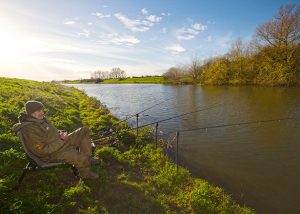 13. Pike Thrive on Neglect.
13. Pike Thrive on Neglect.
Every piker worth his or her salt knows the phrase “pike thrive on neglect” and I always like to add “so get to where is neglected”. Avoid the car park swim and well beaten swims that are obviously fished hard. Stay away from the littered and instead head for the end of the beats or stretches furthest from the car park. Remember it only takes a 2m slack to hold a large river pike search them all meticulously and you just might be pleasantly surprised.
14. Have Fun.
No matter where you are in the world there’s more to fishing than just catching fish. It’s a fantastic excuse for spending hours in beautiful places with stunning flora and fauna. It’s a great time to think and spend time with friends or family, I’m a father of two boys and watching them catch personal bests has been one of the many highlights of my fishing adventures. Fishing means so many different things to different people, enjoy every single moment, I do.
Hopefully these tips will get you thinking about river pike fishing and how to put a few more fish on the bank. I wish you the very best of luck and enjoy your holiday if you’re heading home
Tight lines and Wet Nets.
